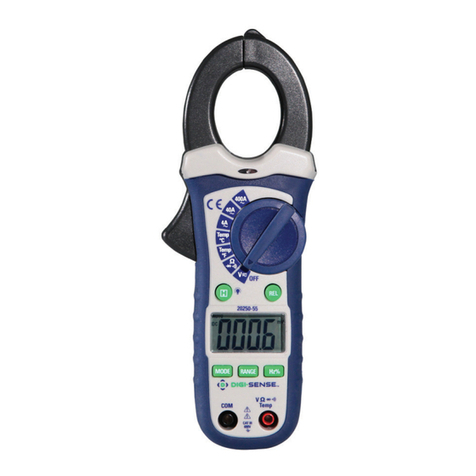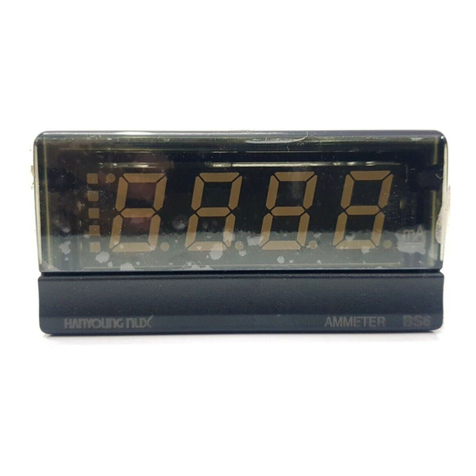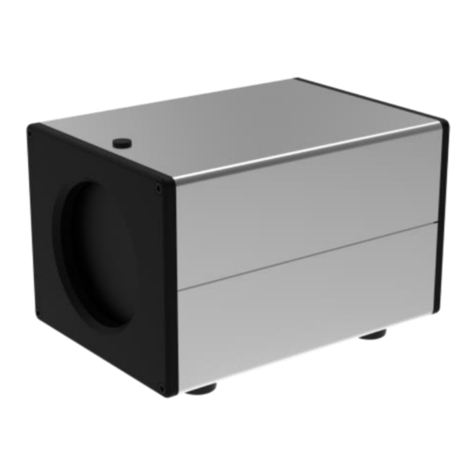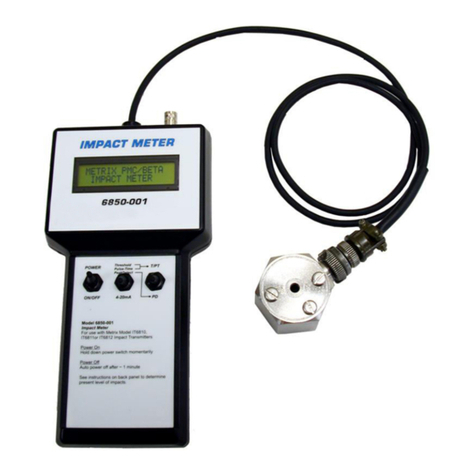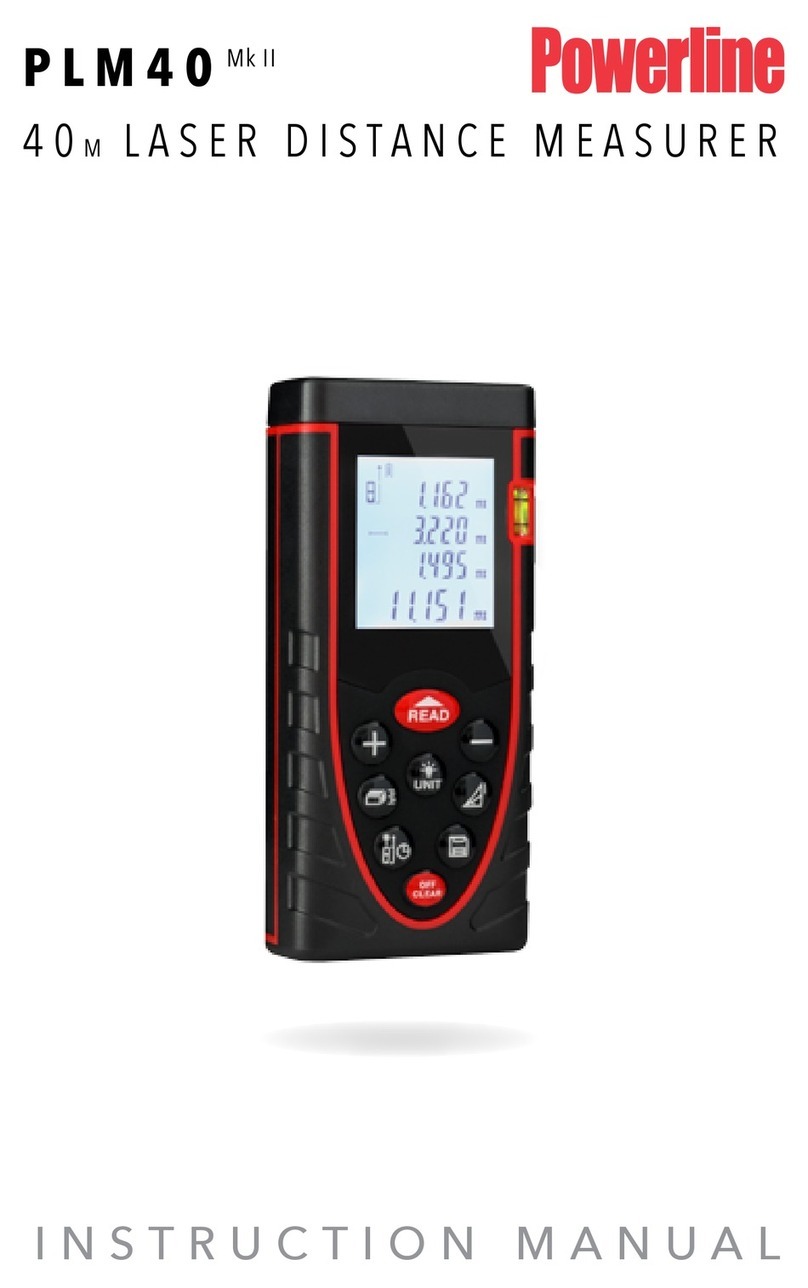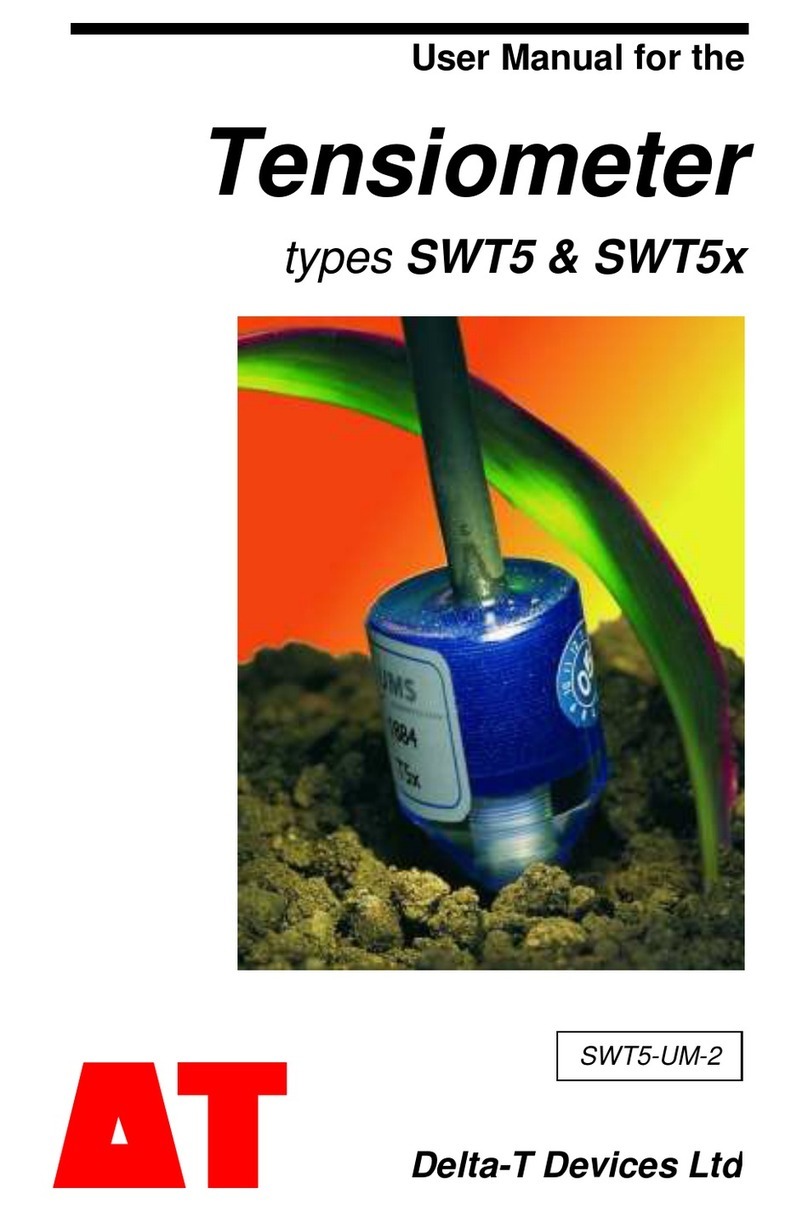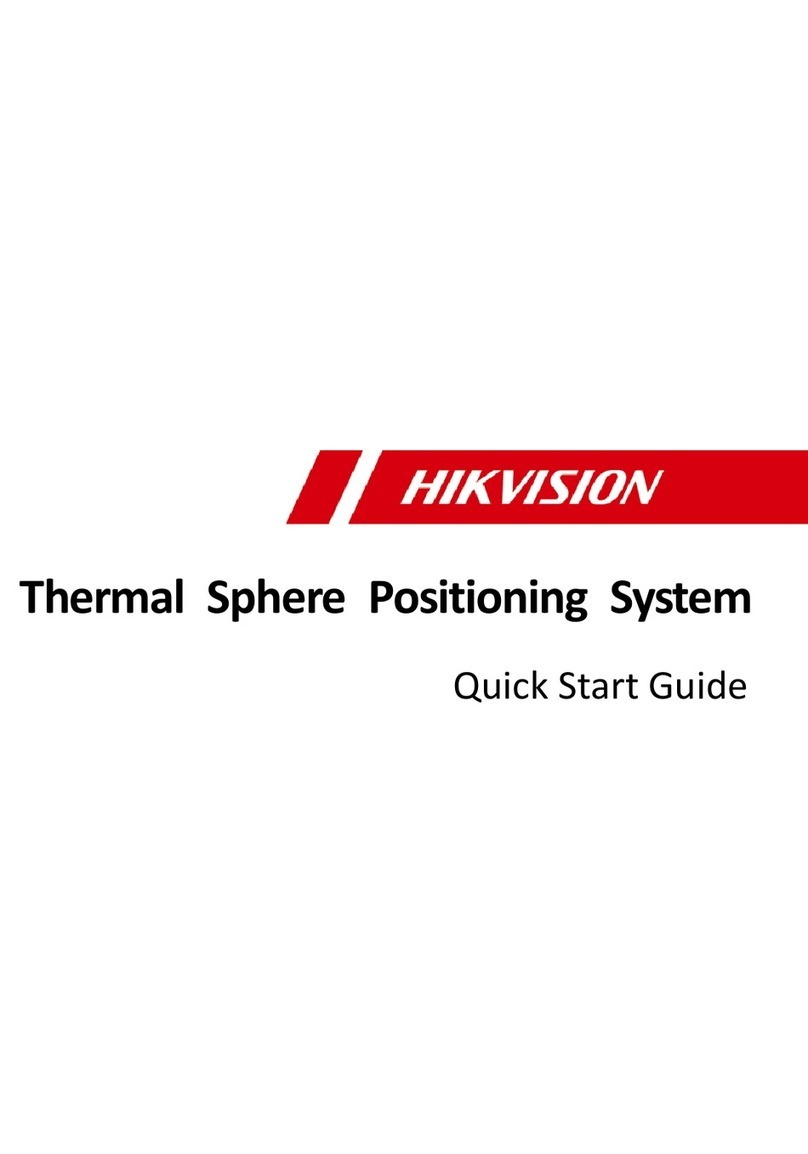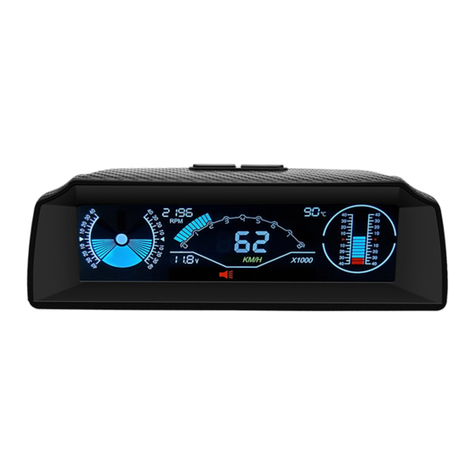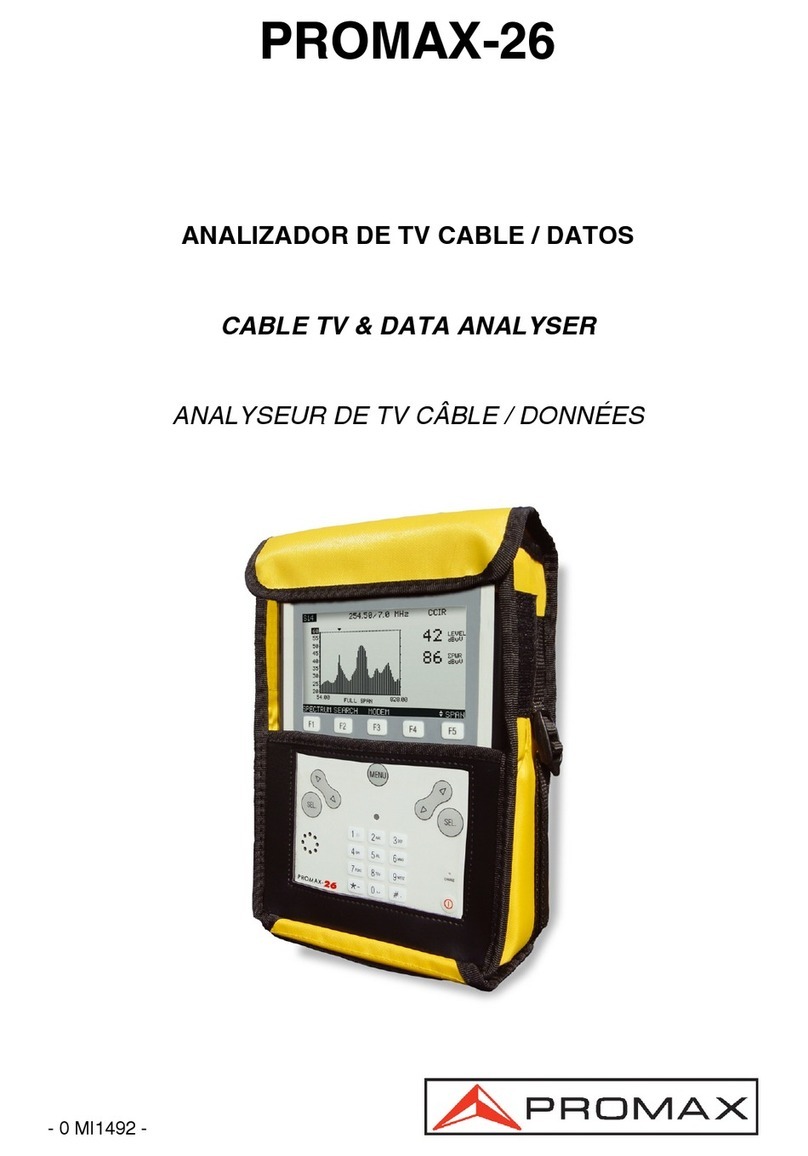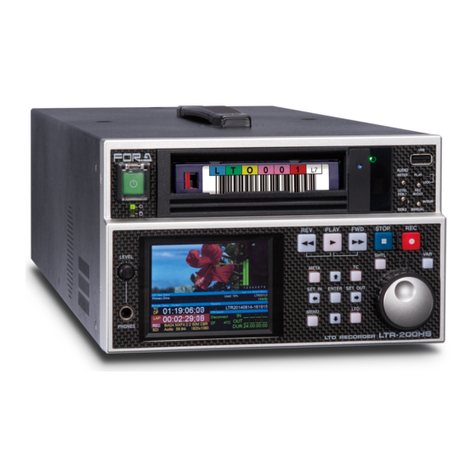Feltest Caliper Profiler User manual

Feltest Caliper Profiler
Instruction Manual

2
1. Table of contents
Page
2. Declaration of conformity 3
3. Safety instructions 4
3.1 Intended use 4
3.2 Safety precautions 4
4. About the instrument 5
4.1 Names of parts 6
4.2 Specifications 6
4.3 Working principle 7
5. Measuring 7
5.1 Finding a good position 7
5.2 Measuring procedure 8
5.3 Feltest Caliper Profiler memory navigation 9
5.4 Feltest Caliper Profiler PC communication 10
6. Interpretation of the results on forming fabrics 11
7. Interpretation of the results on press felts 12
7.1 Judging the condition of a felt 13
7.2 Sources of error 15
8. Maintenance 15
8.1 Accuracy and calibration 16
8.2 Service 16
Appendix A felt compaction table for felt “new weights 17
Appendix B felt compaction curves high-speed machines 19
Appendix C felt compaction curve for Yankee tissue felts 19

3
2. Declaration of conformity
The product “Feltest Caliper Profiler” is conform to the following directive:
89/336/EEC of 03.05.1989, EMC directive
The following Generic Standards have been used to show compliance
with this EMC Directive:
a) Emission : NEN-EN 50081-1 January 1994
b) Immunity : NEN-EN 50082-2 June 1995
Signed on May 1st 2004,
M.F. Lensvelt
Managing Director
Postal address:
Feltest Equipment BV
Postbus 205
NL-6960 AE Eerbeek
The Netherlands

4
3. Safety instructions
3.1 Intended use
The Feltest Caliper Profiler is intended only to measure the caliper of
forming fabrics and press felts on running paper machines and is not
intended, nor suitable to be used on any other object nor for any other
application.
Do not measure running dryer screens or similar products.
The seam of these products could snatch the instrument out of ones hands,
which might cause severe injuries and/or costly damage.
Use the instrument only as intended and according to this manual!
3.2 Safety precautions
• Before using the instrument, read this manual
carefully, it contains important safety information.
If you not fully understand this manual, please
contact Feltest. Store this manual with the
instrument, easy to find for users.
•Do not make measurements close to in-going nips.
You or the instrument could be grabbed into the
machine, which might cause severe injuries and/or
costly damages.
• Do not measure fabrics or press felts with damages.
Before starting measurements, check with the (other)
staff if holes or damaged edges are known and check
for signs of defects yourself. If there are any damages
or if you have any doubt; Do not measure !
• Do not push the inside corner of the Caliper Profiler
against the edge of the fabric or felt.
Irregular edges could snatch the instrument
out of your hands.

5
• Before starting a measurement, make sure you posi-
tion yourself in a stable position on a stable base.
• Always hold the instrument with two hands during
the complete measurement procedure, to avoid the
tool being snatched out of your hands.
• Do not bend over into the machine.
If you must, lean against a safety fence after checking its stability first.
• Do not ignore or remove safety constructions.
• Always follow the safety instructions that apply for the location
Please note:
Doing measurements on running paper machines is potentially
dangerous and requires alertness, concentration and common
sense.
The instruments of Feltest Equipment B.V. are designed and constructed
to be as safe as possible for their intended use. Nevertheless, it is the
user's responsibility to actually use the instruments in a safe way.
Feltest Equipment B.V. cannot be held responsible or liable in any way for
suffered injuries or damages that occurred while using their instruments.
4. About the instrument
The instrument contains high precision parts and therefore must
be treated with care.
The instrument is protected against dust and spray water.
However, avoid submerging the instrument in water and
avoid strong mechanical shocks.

6
4.1 Names of parts
1. Anvil
2. Probe
3. Pushbutton (del pos, p+)
push short -> higher memory position
push long to delete the current
memory position
4. Pushbutton (del mem, p-)
push short -> lower memory position
push long to clear all memory
positions
5. Display
6. Pushbutton (min, max, avg)
push for the statistical functions.
7. Pushbutton (ⱷ, set zero)
push short to turn the instrument on/off
push long to set zero
8. Red indication LED
9. Connector for communication to a
computer
10. Trigger
11. Battery container
12. Front handgrip
4.2 Specifications
measuring units
mil / mm
measuring range
0 –5 mm
accuracy
± 0,01 mm
length x height x thickness
431 x 130 x 27 mm
weight
1,7 kg
sampling rate
5 –25 Hz
protection
IP64
battery type
Alkaline 9 Volt, size PP3

7
4.3 Working principle
The working principle is as follows: a variable resistor is
mechanically connected with the upper probe. Opening the mouth
gives a change in the electric resistance, which is transformed into
mils (1/1000 of an inch) or millimeters and shown on the display.
The sampling rate can be set between 5-25 times per second.
The values shown on the display are dampened to avoid a rapidly
changing and therefore unreadable display.
When the instrument undergoes temperature chances
(e.g. a relatively dry press felt, generates a lot of friction and
therefore heat during the measurement), there will be a zero-shift.
Therefore the instrument needs some time to adjust to this new
temperature (i.e. the metal parts need to expand) before the most
accurate results can be acquired.
The distance that the instrument is moved into the fabric or felt can
be read from the linear scale on the housing.
The trigger has two functions:
When pulled, the mouth opens.
When pushed, the recording of data into the memory starts/stops
5. Measuring
5.1 Finding a good position
A safe and stable position is of the utmost importance for safety.
If there are several safe positions to measure,
select one on the following criteria:
General:
Measure only on the return-run,
were the fabric/felt runs without paper.

8
Press felts only:
The caliper must be measured within the sheet's run, preferably
close after the press nip, before any showers or felt conditioning
(see chapter: Interpretation of the results).
5.2 Measuring procedure
Note: For press felts the measurement is only of value when the felt
has been running for at least 1 hour under a steady press load!
1. Switch the instrument on by pushing the (ⱷ, set zero)
button shortly.
2. Check if the display reads "0.00 mm" with closed and clean probes.
Set zero by pushing the (ⱷ, set zero) button more than 2 seconds.
When the display shows "set zero", release the button.
Note: Due to temperature differences the zero may shift.
Check the zero setting before each measurement.
3. Open the mouth of the instrument by pulling the trigger
and move the instrument into the running fabric or felt.
Do not let the inner corner of the instruments
mouth touch the edge of the fabric or felt!
Keep the instrument perpendicular to the
fabric or felt and release the trigger quietly.
4. Slightly push the instrument upward to make
sure that the probe has free movement.
After 2 seconds a stable result is achieved.
5. Pushing the trigger will start the red indicator
LED flashing and the recording of the test
results into the next available memory position.

9
6. To make a caliper profile or to measure the thinnest or thickest
spot, move the instrument slowly towards the edge of the fabric
or felt. When the probe goes over the edge of the fabric or felt,
the data recording will stop automatically the red indicator
stops flashing.
Note:
For press felts it isn’t always needed to make a caliper profile.
In that case keep the instrument steady and after a few seconds
switch off the data recording by pushing the trigger again. Open
the mouth by pulling the trigger and remove the instrument.
7. Check the zero setting.
If, due to temperature differences during measuring, zero has
shifted more than ± 0.03 mm, the measurement must be
discarded; set zero and execute a new measurement.
8. To display the lowest/highest and the average value, press
button (min, max, avg) several times. Pressing the button once
more will show the current value again.
9. Pressing the (ⱷ, set zero) button shortly will turn off the instrument.
5.3 Feltest Caliper Profiler memory navigation
Every time a recording is started, automatically a new memory
position is created.
Shortly push p+ button or p- button to navigate up or down through
the memory positions.
When the del pos button is pushed longer than 2 seconds
the current memory position will be deleted.
As long as the display reads p xx delete? (xx = memory position) it is
still possible to cancel by releasing the button.
A deleted position is shown by –xx instead of p xx.

10
Note: Deleting a position doesn’t create free memory space
for new positions !
When the del mem button is pushed longer than 2 seconds, all
stored memory positions are deleted and all memory space comes
available for new measurements.
5.4 Feltest Caliper Profiler PC communication
To capture the measured data from a Caliper Profiler to a
computer, or to chance its settings, you first have to install the
application Feltest Service (FS)from included CD-ROM.
A manual and a help file are enclosed in the software.
When the Caliper Profiler is connected to the computer's USB-port
for the first time, the system might require the installation of
drivers from the CD-ROM.
When the Caliper Profiler is connected to a computer, start FS
and press the "Auto-search" button on the tab "Set-up Profiler".
Available settings:
name
description
range
default
measure-
ments /
second
number of
measurements stored in
memory per second
5 - 25 Hz
10
auto-off
level
when measurements
drop below ….mm/mil
recording stops
0.1-1.5 mm
3.9 –59 mil
0,15
dimension
unit
measuring in millimeters
or
mils (1/1000”)
mm / mil
mm

11
6. Interpretation of the results on forming fabrics
The high accuracy of Feltest Caliper Profilers has the advantage that
even small dynamic changes in the forming fabric can be measured.
For example, due to high fabric tension the caliper can decrease up
to 0.04 mm in SSB fabrics. And even more on single and double
layer forming fabrics.
To get a feeling for the degree of caliper change due to fabric
tension, measure the same fabric at two positions with different
tension. For example just after the drive roll (relatively low fabric
tension) and at a safe distance before the breast roll (relatively high
fabric tension).
Most suppliers of forming fabrics recommend a minimum caliper
for their products. Usually the thinnest spot determines when a
forming fabric must be replaced.
This spot often can be found within 30 cm from the wire edge;
because of wear caused by the edges of foils, poorly positioned
stops on suction boxes, etc. etc..
Rest potential [%] = caliper(run) –caliper(min) x 100%
caliper(min)
Note:
Above calculation doesn’t take into account from which side the
fabric has lost material. Usually forming fabrics have more material
at the machine side to withstand abrasion; The warp, which gives
the fabric it’s strength, is usually located on the paper side. Hence,
a caliper decrease is much more serious if the material is lost on the
paper side then when it would be lost from the roll side! Visual
inspection during a stop is required.

12
7. Interpretation of the results on press felts
When the felt goes through the nip, it’s compressed and afterwards
it will expand back.
During the lifetime of the felt this expansion will decrease and the
felt becomes compacted.
Compacted felts absorb less water than non-compacted felts.
Therefore the caliper of the felt should be judged in conjunction
with the felt weight.
h = caliper (height) of the felt (mm)
s = solid (non-absorbing) part of the felt (mm)
v = void (absorbing) part of the felt (mm)
F = actual weight of 1m2felt (g/m2)
ρ= density of press felt (approx. 1.14 for PA) (g/cm3)
s =
COMPACTION =
* 100% =
* 11.4%
WATER STORAGE CAPACITY [g/m2] = 1000 *
- F

13
In Appendix-A you can look up storage capacity at different
compaction percentages for felt types with different “new
weights”
To interpret the compaction into day’s life, graphics of various
positions at high-speed machines ( V > 900 m/min ) are added as
Appendix-B and Appendix-C.
Note: These graphics are an average of many different
measurements on many different paper machines
with many different felt types from many different
suppliers. It is recommended to develop such a curve
for each specific position of your machine.
7.1 Judging the condition of a felt
The caliper (h) is measured with the Feltest Caliper Profiler and is
therefore known. When the water content is also measured with
a felt moisture meter, it can be converted into felt void (v).
Comparison of the measured water content to the theoretical
storage capacity of a felt, generates interesting information in
regard to the felt’s condition.
Measured water content < Theoretical storage capacity
If the actual water content is less than the storage capacity,
the felt is not fully saturated.
For “nip-dewatering machines”this indicates that the felt is bulky
and that the de-watering over the nip is not optimal.
It could mean that felt is not yet 'run in'.
For “Uhle box dewatering machines”this is quite a normal situation
for a felt in a good condition.
Measured water content > Theoretical storage capacity
If the actual water content is larger than the storage capacity,
the felt contains more water than that there is theoretically space
for. The answer to this impossibility is to be found in the use of the
wrong current felt weight and/or re-wetting of the felt after the nip.

14
The actual water content is best measured at
the same position as where the caliper was
measured.
Water from the felt conditioning system can
have an influence. Therefore try to measure
right after the nip and certainly before the felt
conditioning.
If there is much re-wetting of the felt at the press nip exit, the
measurement shows more water than there was in the mid-nip,
therefore wrongly indicating felt wear.
Hence it’s important to know which kind of press roll is used (blind
drilled rolls cause more re-wetting than grooved or suction rolls)
Blind drilled press roll Grooved press roll
Low speed machines like board machines usually have considerable
re-wetting of the felt. This makes wear-calculation extremely
difficult.
Estimation of current felt weight (Fcurrent)
in fast running / nip dewatering machines:
Fcurrent = (1000 * h - water content) * 1.14 * re-wetting factor
(indicative) re-wetting factor for suction roll at high speed: 1.05
(indicative) re-wetting factor for for tissue felts: 1.16

15
Note: To establish representative values for the re-wetting factor
compare the actual weight from lab reports which are
made later to the calculated Fcurrent
7.2 Sources of error
• wrong felt weight is being used, due to wrong data or because
the felt has lost weight.
In particular in combination with CaCO3a loss of weight of the
felt of 15 to 20% due to wear is common. In case of a very high
calculated compaction (> 85%) it’s likely that the felt has lost
fibers -> A low water content and high airspeeds at the Uhle
boxes can confirm this.
• The measured caliper was affected by some local wear,
for instance caused by a suction box edge -> measure again
• The measurement was done outside the sheet’s run -> measure
again
• No ‘set zero’ performed just before the measurement.
The temperature difference between a 1st press position in the
basement and a 3rd press position near the drying hood can be
substantial -> set zero, and measure again
8. Maintenance
Cleaning
For accurate measurements the two stainless steel probes must be
cleaned with a cloth or tissue. The aluminum frame and the
polycarbonate display window can be cleaned with a humid cloth
and, if necessary, some mild detergent.

16
Battery change
When the battery needs to be replaced, a low bat warning is shown
in the display for a few seconds when the instrument is switched
on.
Unscrew the front plate of the battery container and replace the 9-
Volt (size PP3) battery. Before putting back the front plate, check if
the rubber seal around the battery container is still on its place and
in good condition. Tighten the two screws with medium force.
8.1 Accuracy and calibration
A little wear on the two probes doesn’t influence the
± 0.01 mm accuracy within 0.50 to 5.00 mm range of a
Feltest Caliper Profiler.
More extensive wear (flattened surfaces of the probes)
will result in too high caliper values:
• when the instrument is not kept exactly perpendicular to
the fabric or felt (misalignment),
• because the worn upper probe will be pushed a little less
into press felts
8.2 Service
When the accuracy seems out of specification, the instrument
needs to be send to
Feltest Equipment BV for service and re-calibration.
Please add a problem description in English or German language
and send it properly packed and insured to Feltest Equipment BV.
The actual address can be found on www.feltest.com.

17
Appendix-A(1/2) Felt compaction table felt “new weights” 900 –1350 g/m2
900
950
1000
1050
1100
1150
1200
1250
1300
1350
caliper
comp.
st.cap.
comp.
st.cap.
comp.
st.cap.
comp.
st.cap.
comp.
st.cap.
comp.
st.cap.
comp.
st.cap.
comp.
st.cap.
comp.
st.cap.
comp.
st.cap.
1,10
72
311
76
267
80
223
84
179
88
135
92
91
96
47
100
4
104
-40
108
-84
1,11
71
321
75
277
79
233
83
189
87
145
91
101
95
57
99
14
103
-30
107
-74
1,12
70
331
74
287
78
243
82
199
86
155
90
111
94
67
98
24
102
-20
106
-64
1,13
70
341
74
297
78
253
82
209
85
165
89
121
93
77
97
34
101
-10
105
-54
1,14
69
351
73
307
77
263
81
219
85
175
88
131
92
87
96
44
100
0
104
-44
1,15
69
361
72
317
76
273
80
229
84
185
88
141
92
97
95
54
99
10
103
-34
1,16
68
371
72
327
76
283
79
239
83
195
87
151
91
107
95
64
98
20
102
-24
1,17
67
381
71
337
75
293
79
249
82
205
86
161
90
117
94
74
97
30
101
-14
1,18
67
391
71
347
74
303
78
259
82
215
85
171
89
127
93
84
97
40
100
-4
1,19
66
401
70
357
74
313
77
269
81
225
85
181
88
137
92
94
96
50
100
6
1,20
66
411
69
367
73
323
77
279
80
235
84
191
88
147
91
104
95
60
99
16
1,21
65
421
69
377
72
333
76
289
80
245
83
201
87
157
91
114
94
70
98
26
1,22
65
431
68
387
72
343
75
299
79
255
83
211
86
167
90
124
93
80
97
36
1,23
64
441
68
397
71
353
75
309
78
265
82
221
86
177
89
134
93
90
96
46
1,24
64
451
67
407
71
363
74
319
78
275
81
231
85
187
88
144
92
100
96
56
1,25
63
461
67
417
70
373
74
329
77
285
81
241
84
197
88
154
91
110
95
66
1,26
63
471
66
427
70
383
73
339
77
295
80
251
84
207
87
164
91
120
94
76
1,27
62
481
66
437
69
393
73
349
76
305
79
261
83
217
86
174
90
130
93
86
1,28
62
491
65
447
69
403
72
359
75
315
79
271
82
227
86
184
89
140
93
96
1,29
61
501
65
457
68
413
71
369
75
325
78
281
82
237
85
194
88
150
92
106
1,30
61
511
64
467
67
423
71
379
74
335
78
291
81
247
84
204
88
160
91
116
1,31
60
521
64
477
67
433
70
389
74
345
77
301
80
257
84
214
87
170
90
126
1,32
60
531
63
487
66
443
70
399
73
355
76
311
80
267
83
224
86
180
90
136
1,33
59
541
63
497
66
453
69
409
73
365
76
321
79
277
82
234
86
190
89
146
1,34
59
551
62
507
65
463
69
419
72
375
75
331
79
287
82
244
85
200
88
156
1,35
58
561
62
517
65
473
68
429
71
385
75
341
78
297
81
254
84
210
88
166
1,36
58
571
61
527
64
483
68
439
71
395
74
351
77
307
81
264
84
220
87
176
1,37
58
581
61
537
64
493
67
449
70
405
74
361
77
317
80
274
83
230
86
186
1,38
57
591
60
547
64
503
67
459
70
415
73
371
76
327
79
284
83
240
86
196
1,39
57
601
60
557
63
513
66
469
69
425
73
381
76
337
79
294
82
250
85
206
1,40
56
611
60
567
63
523
66
479
69
435
72
391
75
347
78
304
81
260
85
216
1,41
56
621
59
577
62
533
65
489
68
445
72
401
75
357
78
314
81
270
84
226
1,42
56
631
59
587
62
543
65
499
68
455
71
411
74
367
77
324
80
280
83
236
1,43
55
641
58
597
61
553
64
509
67
465
71
421
74
377
77
334
80
290
83
246
1,44
55
651
58
607
61
563
64
519
67
475
70
431
73
387
76
344
79
300
82
256
1,45
54
661
57
617
60
573
64
529
67
485
70
441
73
397
76
354
79
310
82
266
1,46
54
671
57
627
60
583
63
539
66
495
69
451
72
407
75
364
78
320
81
276
1,47
54
681
57
637
60
593
63
549
66
505
69
461
72
417
75
374
78
330
81
286
1,48
53
691
56
647
59
603
62
559
65
515
68
471
71
427
74
384
77
340
80
296
1,49
53
701
56
657
59
613
62
569
65
525
68
481
71
437
74
394
77
350
79
306
1,50
53
711
56
667
58
623
61
579
64
535
67
491
70
447
73
404
76
360
79
316
1,51
52
721
55
677
58
633
61
589
64
545
67
501
70
457
73
414
76
370
78
326
1,52
52
731
55
687
58
643
61
599
63
555
66
511
69
467
72
424
75
380
78
336
1,53
52
741
54
697
57
653
60
609
63
565
66
521
69
477
72
434
75
390
77
346
1,54
51
751
54
707
57
663
60
619
63
575
66
531
68
487
71
444
74
400
77
356
1,55
51
761
54
717
57
673
59
629
62
585
65
541
68
497
71
454
74
410
76
366
1,56
51
771
53
727
56
683
59
639
62
595
65
551
67
507
70
464
73
420
76
376
1,57
50
781
53
737
56
693
59
649
61
605
64
561
67
517
70
474
73
430
75
386
1,58
50
791
53
747
56
703
58
659
61
615
64
571
67
527
69
484
72
440
75
396
1,59
50
801
52
757
55
713
58
669
61
625
63
581
66
537
69
494
72
450
74
406
1,60
49
811
52
767
55
723
58
679
60
635
63
591
66
547
69
504
71
460
74
416
1,61
49
821
52
777
54
733
57
689
60
645
63
601
65
557
68
514
71
470
74
426
1,62
49
831
51
787
54
743
57
699
60
655
62
611
65
567
68
524
70
480
73
436
1,63
48
841
51
797
54
753
57
709
59
665
62
621
65
577
67
534
70
490
73
446
1,64
48
851
51
807
53
763
56
719
59
675
62
631
64
587
67
544
70
500
72
456
1,65
48
861
51
817
53
773
56
729
58
685
61
641
64
597
66
554
69
510
72
466
1,66
48
871
50
827
53
783
55
739
58
695
61
651
63
607
66
564
69
520
71
476
1,67
47
881
50
837
53
793
55
749
58
705
60
661
63
617
66
574
68
530
71
486
1,68
47
891
50
847
52
803
55
759
57
715
60
671
63
627
65
584
68
540
70
496
1,69
47
901
49
857
52
813
55
769
57
725
60
681
62
637
65
594
67
550
70
506
1,70
46
911
49
867
52
823
54
779
57
735
59
691
62
647
64
604
67
560
70
516
1,71
46
921
49
877
51
833
54
789
56
745
59
701
62
657
64
614
67
570
69
526
1,72
46
931
48
887
51
843
54
799
56
755
59
711
61
667
64
624
66
580
69
536
1,73
46
941
48
897
51
853
53
809
56
765
58
721
61
677
63
634
66
590
68
546
1,74
45
951
48
907
50
863
53
819
55
775
58
731
60
687
63
644
66
600
68
556
1,75
45
961
48
917
50
873
53
829
55
785
58
741
60
697
63
654
65
610
68
566
1,76
45
971
47
927
50
883
52
839
55
795
57
751
60
707
62
664
65
620
67
576
1,77
45
981
47
937
50
893
52
849
55
805
57
761
59
717
62
674
64
630
67
586
1,78
44
991
47
947
49
903
52
859
54
815
57
771
59
727
62
684
64
640
67
596
1,79
44
1001
47
957
49
913
51
869
54
825
56
781
59
737
61
694
64
650
66
606
1,80
44
1011
46
967
49
923
51
879
54
835
56
791
58
747
61
704
63
660
66
616

18
Appendix-A(2/2) Felt compaction table felt “new weights” 1150-1600 g/m2
cali-
1150
1200
1250
1300
1350
1400
1450
1500
1550
1600
per
comp.
st.
cap.
comp.
st.
cap.
comp.
st.
cap.
comp.
st.
cap.
comp.
st.
cap.
comp.
st.
cap.
comp.
st.
cap.
comp.
st.
cap.
comp.
st.
cap.
comp.
st.
cap.
1,60
63
591
66
547
69
504
71
460
74
416
77
372
79
328
82
284
85
240
88
196
1,61
63
601
65
557
68
514
71
470
74
426
76
382
79
338
82
294
84
250
87
206
1,62
62
611
65
567
68
524
70
480
73
436
76
392
79
348
81
304
84
260
87
216
1,63
62
621
65
577
67
534
70
490
73
446
75
402
78
358
81
314
83
270
86
226
1,64
62
631
64
587
67
544
70
500
72
456
75
412
78
368
80
324
83
280
86
236
1,65
61
641
64
597
66
554
69
510
72
466
74
422
77
378
80
334
82
290
85
246
1,66
61
651
63
607
66
564
69
520
71
476
74
432
77
388
79
344
82
300
85
256
1,67
60
661
63
617
66
574
68
530
71
486
74
442
76
398
79
354
81
310
84
266
1,68
60
671
63
627
65
584
68
540
70
496
73
452
76
408
78
364
81
320
84
276
1,69
60
681
62
637
65
594
67
550
70
506
73
462
75
418
78
374
80
330
83
286
1,70
59
691
62
647
64
604
67
560
70
516
72
472
75
428
77
384
80
340
83
296
1,71
59
701
62
657
64
614
67
570
69
526
72
482
74
438
77
394
80
350
82
306
1,72
59
711
61
667
64
624
66
580
69
536
71
492
74
448
76
404
79
360
82
316
1,73
58
721
61
677
63
634
66
590
68
546
71
502
74
458
76
414
79
370
81
326
1,74
58
731
60
687
63
644
66
600
68
556
71
512
73
468
76
424
78
380
81
336
1,75
58
741
60
697
63
654
65
610
68
566
70
522
73
478
75
434
78
390
80
346
1,76
57
751
60
707
62
664
65
620
67
576
70
532
72
488
75
444
77
400
80
356
1,77
57
761
59
717
62
674
64
630
67
586
69
542
72
498
74
454
77
410
79
366
1,78
57
771
59
727
62
684
64
640
67
596
69
552
71
508
74
464
76
420
79
376
1,79
56
781
59
737
61
694
64
650
66
606
69
562
71
518
74
474
76
430
78
386
1,80
56
791
58
747
61
704
63
660
66
616
68
572
71
528
73
484
76
440
78
396
1,81
56
801
58
757
61
714
63
670
65
626
68
582
70
538
73
494
75
450
78
406
1,82
55
811
58
767
60
724
63
680
65
636
67
592
70
548
72
504
75
460
77
416
1,83
55
821
58
777
60
734
62
690
65
646
67
602
70
558
72
514
74
470
77
426
1,84
55
831
57
787
60
744
62
700
64
656
67
612
69
568
72
524
74
480
76
436
1,85
55
841
57
797
59
754
62
710
64
666
66
622
69
578
71
534
73
490
76
446
1,86
54
851
57
807
59
764
61
720
64
676
66
632
68
588
71
544
73
500
75
456
1,87
54
861
56
817
59
774
61
730
63
686
66
642
68
598
70
554
73
510
75
466
1,88
54
871
56
827
58
784
61
740
63
696
65
652
68
608
70
564
72
520
75
476
1,89
53
881
56
837
58
794
60
750
63
706
65
662
67
618
70
574
72
530
74
486
1,90
53
891
55
847
58
804
60
760
62
716
65
672
67
628
69
584
72
540
74
496
1,91
53
901
55
857
57
814
60
770
62
726
64
682
67
638
69
594
71
550
73
506
1,92
53
911
55
867
57
824
59
780
62
736
64
692
66
648
69
604
71
560
73
516
1,93
52
921
55
877
57
834
59
790
61
746
64
702
66
658
68
614
70
570
73
526
1,94
52
931
54
887
57
844
59
800
61
756
63
712
66
668
68
624
70
580
72
536
1,95
52
941
54
897
56
854
58
810
61
766
63
722
65
678
67
634
70
590
72
546
1,96
51
951
54
907
56
864
58
820
60
776
63
732
65
688
67
644
69
600
72
556
1,97
51
961
53
917
56
874
58
830
60
786
62
742
65
698
67
654
69
610
71
566
1,98
51
971
53
927
55
884
58
840
60
796
62
752
64
708
66
664
69
620
71
576
1,99
51
981
53
937
55
894
57
850
60
806
62
762
64
718
66
674
68
630
71
586
2,00
50
991
53
947
55
904
57
860
59
816
61
772
64
728
66
684
68
640
70
596
2,01
50
1001
52
957
55
914
57
870
59
826
61
782
63
738
65
694
68
650
70
606
2,02
50
1011
52
967
54
924
56
880
59
836
61
792
63
748
65
704
67
660
69
616
2,03
50
1021
52
977
54
934
56
890
58
846
60
802
63
758
65
714
67
670
69
626
2,04
49
1031
52
987
54
944
56
900
58
856
60
812
62
768
64
724
67
680
69
636
2,05
49
1041
51
997
53
954
56
910
58
866
60
822
62
778
64
734
66
690
68
646
2,06
49
1051
51
1007
53
964
55
920
57
876
60
832
62
788
64
744
66
700
68
656
2,07
49
1061
51
1017
53
974
55
930
57
886
59
842
61
798
64
754
66
710
68
666
2,08
48
1071
51
1027
53
984
55
940
57
896
59
852
61
808
63
764
65
720
67
676
2,09
48
1081
50
1037
52
994
55
950
57
906
59
862
61
818
63
774
65
730
67
686
2,10
48
1091
50
1047
52
1004
54
960
56
916
58
872
61
828
63
784
65
740
67
696
2,11
48
1101
50
1057
52
1014
54
970
56
926
58
882
60
838
62
794
64
750
67
706
2,12
48
1111
50
1067
52
1024
54
980
56
936
58
892
60
848
62
804
64
760
66
716
2,13
47
1121
49
1077
51
1034
54
990
56
946
58
902
60
858
62
814
64
770
66
726
2,14
47
1131
49
1087
51
1044
53
1000
55
956
57
912
59
868
61
824
64
780
66
736
2,15
47
1141
49
1097
51
1054
53
1010
55
966
57
922
59
878
61
834
63
790
65
746
2,16
47
1151
49
1107
51
1064
53
1020
55
976
57
932
59
888
61
844
63
800
65
756
2,17
46
1161
49
1117
51
1074
53
1030
55
986
57
942
59
898
61
854
63
810
65
766
2,18
46
1171
48
1127
50
1084
52
1040
54
996
56
952
58
908
60
864
62
820
64
776
2,19
46
1181
48
1137
50
1094
52
1050
54
1006
56
962
58
918
60
874
62
830
64
786
2,20
46
1191
48
1147
50
1104
52
1060
54
1016
56
972
58
928
60
884
62
840
64
796
2,21
46
1201
48
1157
50
1114
52
1070
54
1026
56
982
58
938
60
894
62
850
64
806
2,22
45
1211
47
1167
49
1124
51
1080
53
1036
55
992
57
948
59
904
61
860
63
816
2,23
45
1221
47
1177
49
1134
51
1090
53
1046
55
1002
57
958
59
914
61
870
63
826
2,24
45
1231
47
1187
49
1144
51
1100
53
1056
55
1012
57
968
59
924
61
880
63
836
2,25
45
1241
47
1197
49
1154
51
1110
53
1066
55
1022
57
978
58
934
60
890
62
846
2,26
45
1251
47
1207
49
1164
50
1120
52
1076
54
1032
56
988
58
944
60
900
62
856
2,27
44
1261
46
1217
48
1174
50
1130
52
1086
54
1042
56
998
58
954
60
910
62
866
2,28
44
1271
46
1227
48
1184
50
1140
52
1096
54
1052
56
1008
58
964
60
920
62
876
2,29
44
1281
46
1237
48
1194
50
1150
52
1106
54
1062
56
1018
57
974
59
930
61
886
2,30
44
1291
46
1247
48
1204
50
1160
51
1116
53
1072
55
1028
57
984
59
940
61
896

19
Appendix-B Compaction% vs Life days Yankee
day’s life
Appendix-C Compaction% vs Life days Yankee pick up felts (tissue)
day’s life
40
45
50
55
60
65
70
75
80
85
90
020 40 60 80 100
1st VN press, bottom
Suction pick up
2nd VN press
3rd / 4th VN press
40
45
50
55
60
65
70
75
80
85
90
020 40 60 80 100
Other manuals for Caliper Profiler
1
Table of contents
Popular Measuring Instrument manuals by other brands
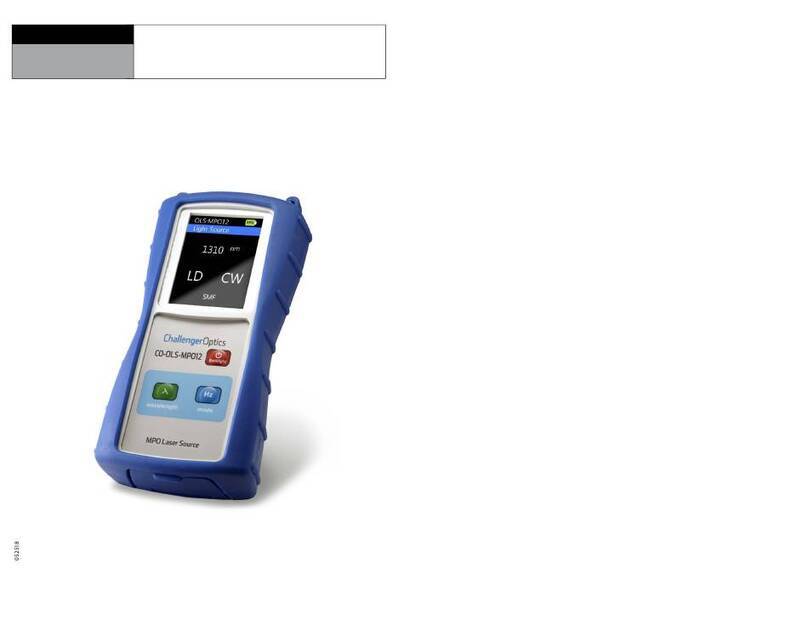
Challenger Optics
Challenger Optics CO-OLS-MP012 operating manual
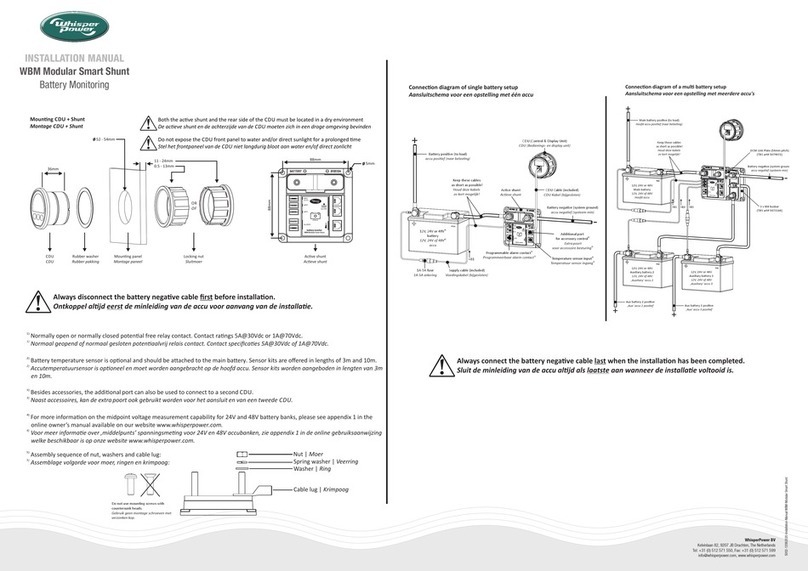
WhisperPower
WhisperPower WBM Modular Smart Shunt installation manual
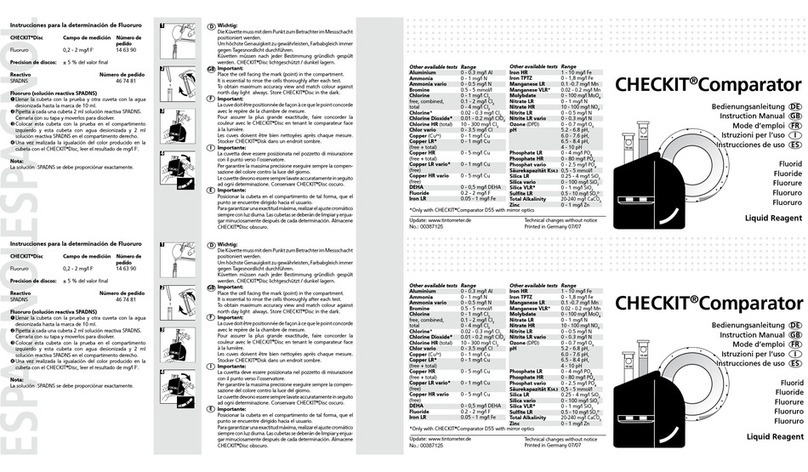
Aqualytic
Aqualytic CHECKIT Comparator instruction manual
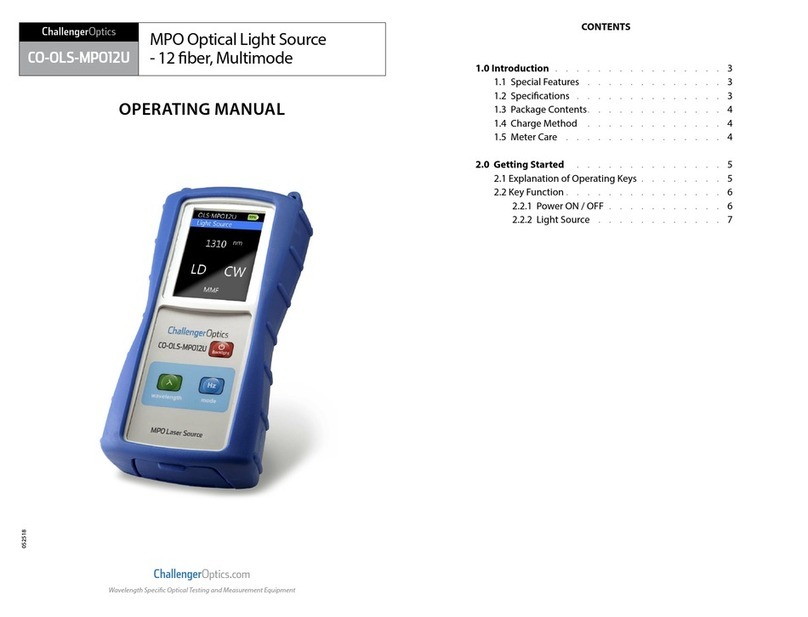
Challenger Optics
Challenger Optics CO-OLS-MPO12U operating manual
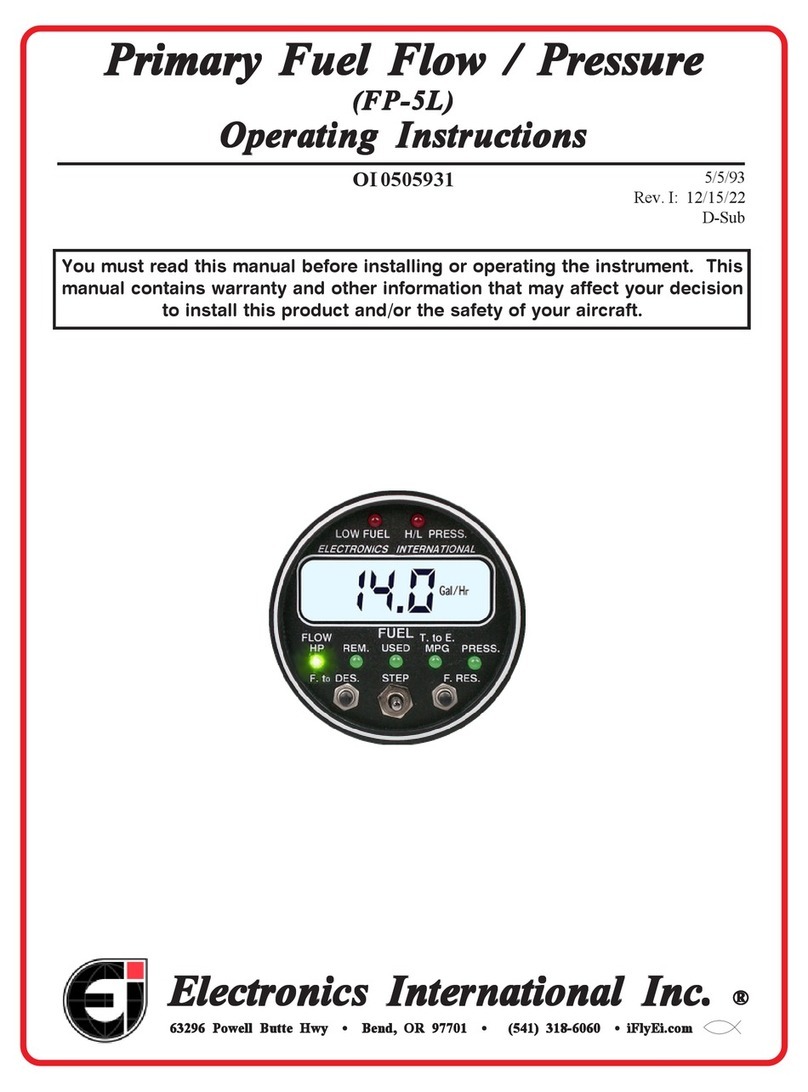
Electronics International Inc
Electronics International Inc FP-5L operating instructions
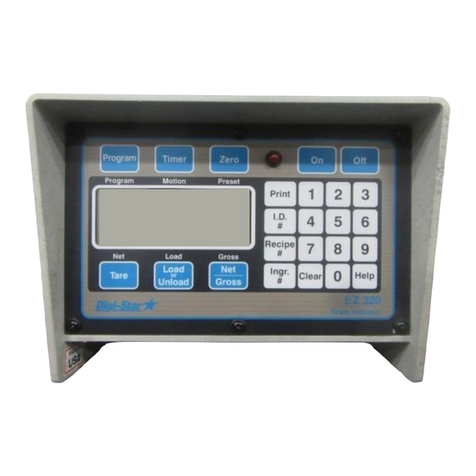
Digistar
Digistar EZ 320 Operation & installation manual
